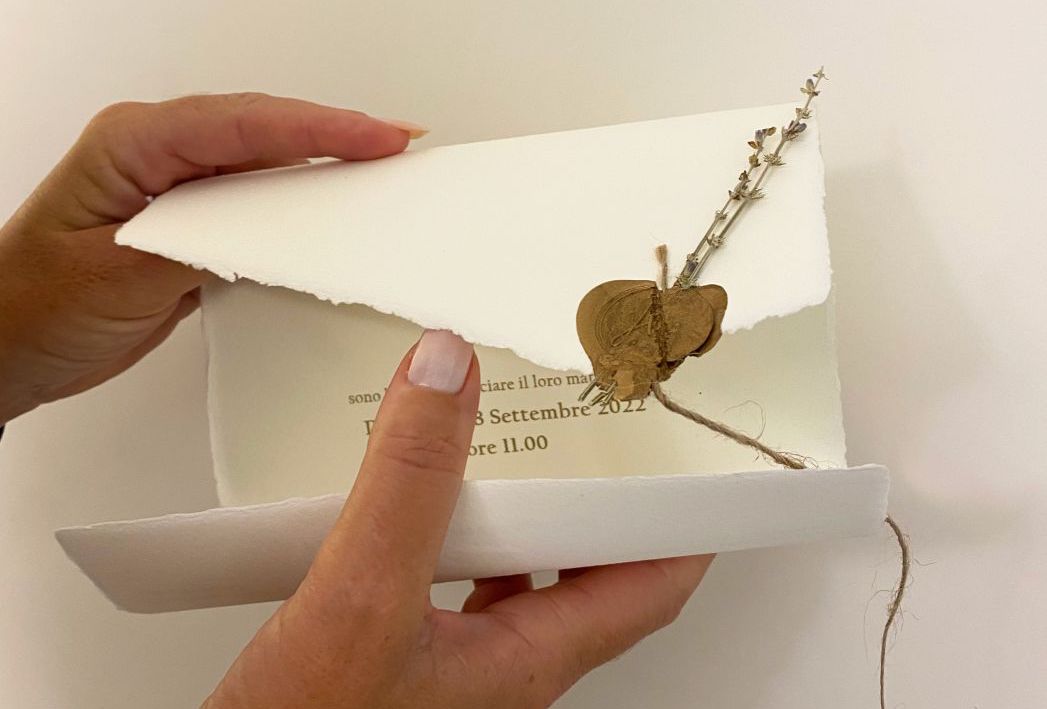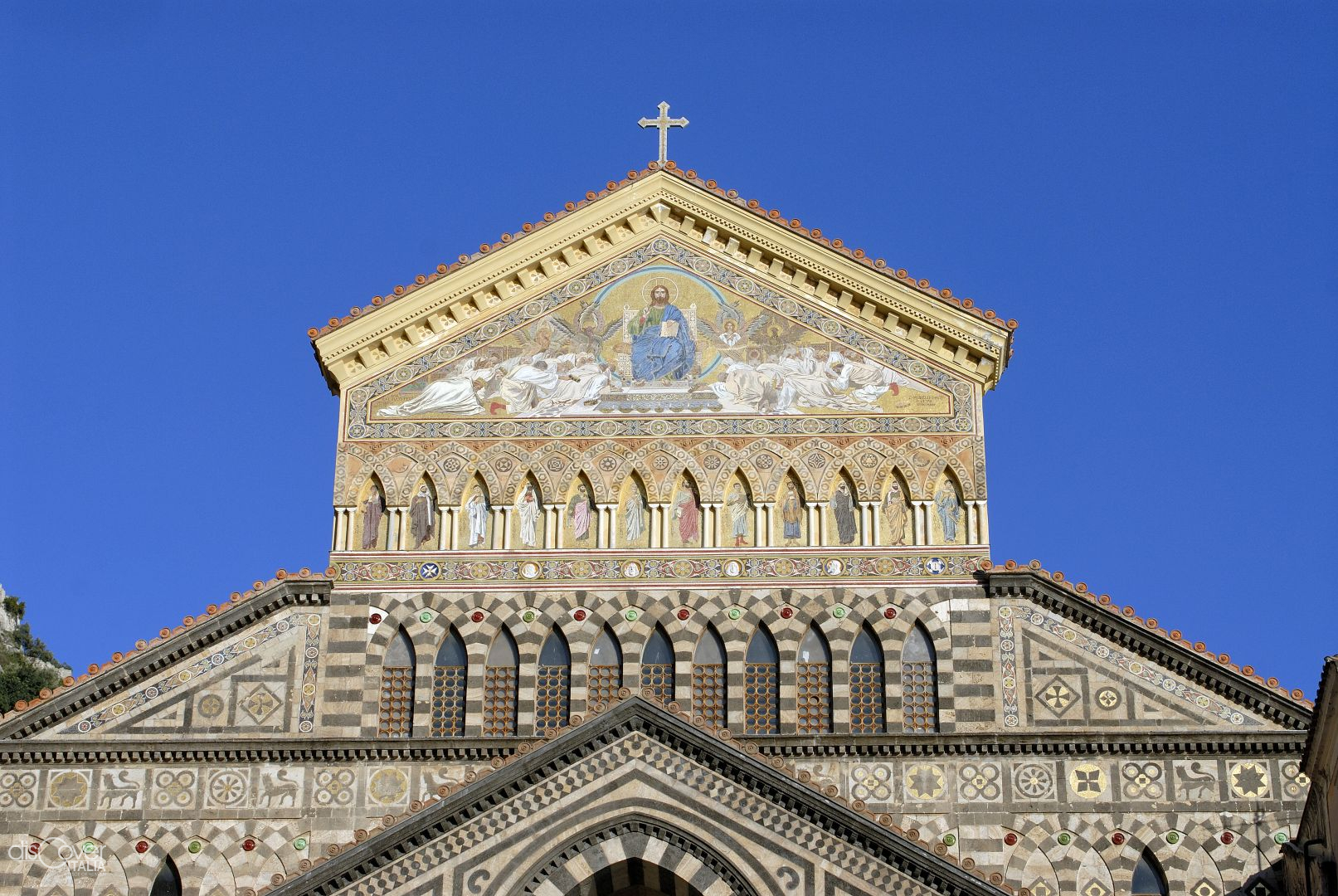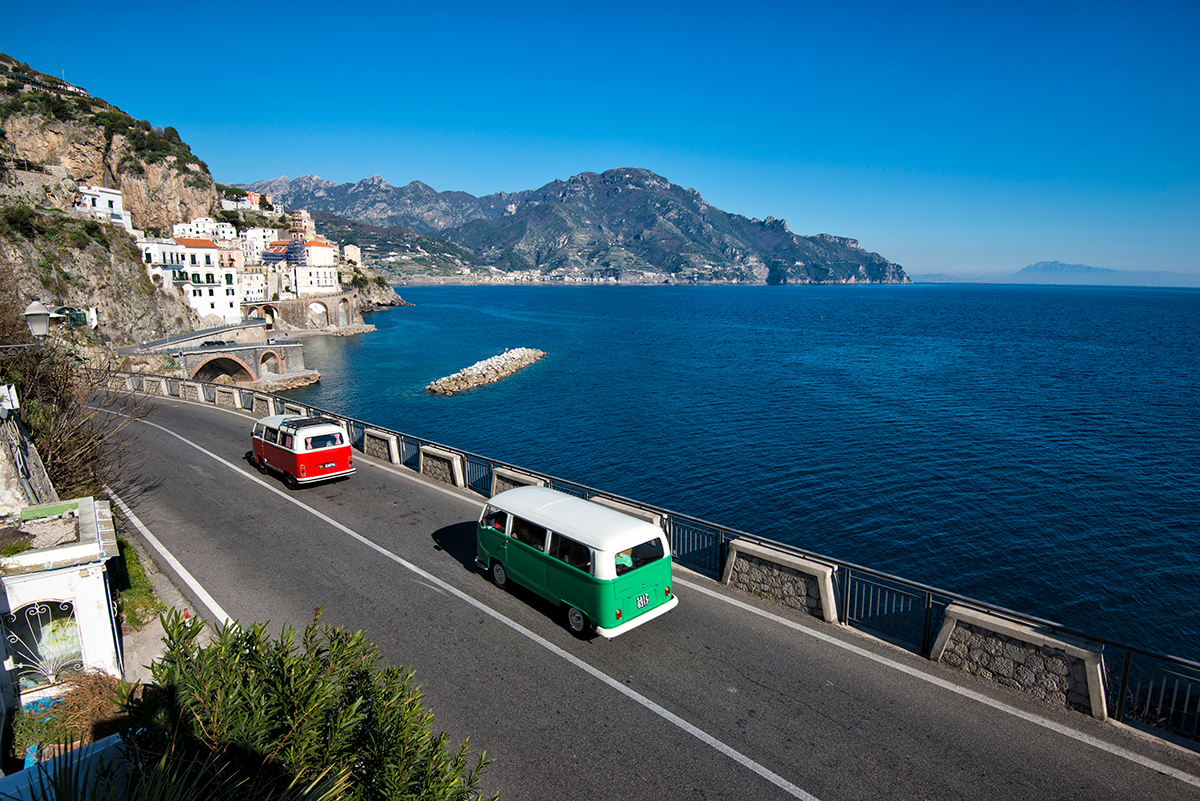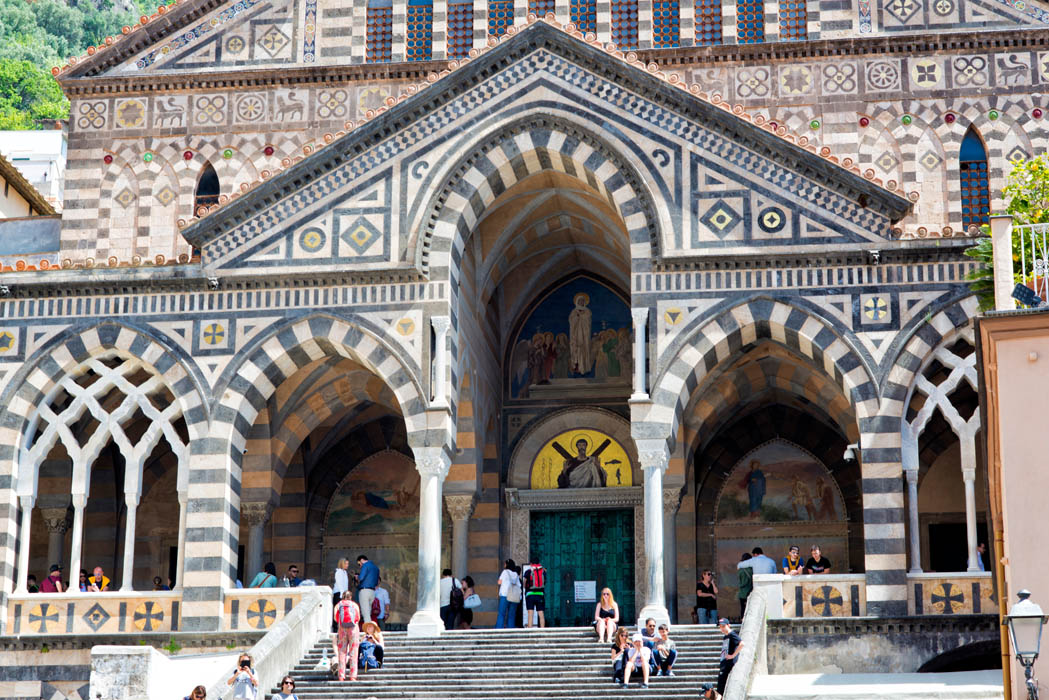It was maybe a lucumon, head of that territory under the Etruscan dominion,
who passed on his name. Or maybe the Greek terminology which indicates a “rocky structure” or simply, the Latin word “regina” (queen).
 Whichever the origin is, Rheginna identifies the two streams that form on the Lattari mountains, between the hills where the hamlets of Tramonti are scattered, and which, continuing their run downstream enriched by the waters of various tributaries, reach distinctly the sea each one in one of the two pats, separated by a small promontory, of a large inlet along the Coast. To the west of that promontory which divides it from Minori, in the larger valley which suggested to the Romans to use the adjective “Major” to Rheginna, there is the city that anciently took its name from the river crossing it. And around which it initially formed. It was during the Middle Ages that the hamlet developed closer to the sea, along the coast marked by the largest beach on the Coast. And the maritime vocation of Maiori finds its highest recognition in the heart of the Republic of Amalfi, of which it was the main port. In that period, since 872, Maiori had the seat of the Admiralty, customs and salt warehouse in the village of Santa Sofia. All prominent functions, to which the productive one was added for its presence in the district of Santa Tecla of the arsenals, which remained active for several centuries, supplying ships to the Kingdom of Naples. It was always in the phase of the Maritime Republic that the city was equipped with an open fortification on the beach with three doors and some drawbridges. While on the hill dominating it inside, to protect it from behind, the castle of San Nicola de Thoro-Piano was built on a pre-existing church. A fortress which was further fortified by the Aragonese between 1465 and 1468, including in the perimeter of its walls barracks for garrisons, a church, warehouses and cisterns for water which were aimed to guarantee useful supplies in case of an attack from the enemy. Still today, the majestic fortress imposes itself on the eye with its walls and nine, strong cylindric towers that alternate them.
Whichever the origin is, Rheginna identifies the two streams that form on the Lattari mountains, between the hills where the hamlets of Tramonti are scattered, and which, continuing their run downstream enriched by the waters of various tributaries, reach distinctly the sea each one in one of the two pats, separated by a small promontory, of a large inlet along the Coast. To the west of that promontory which divides it from Minori, in the larger valley which suggested to the Romans to use the adjective “Major” to Rheginna, there is the city that anciently took its name from the river crossing it. And around which it initially formed. It was during the Middle Ages that the hamlet developed closer to the sea, along the coast marked by the largest beach on the Coast. And the maritime vocation of Maiori finds its highest recognition in the heart of the Republic of Amalfi, of which it was the main port. In that period, since 872, Maiori had the seat of the Admiralty, customs and salt warehouse in the village of Santa Sofia. All prominent functions, to which the productive one was added for its presence in the district of Santa Tecla of the arsenals, which remained active for several centuries, supplying ships to the Kingdom of Naples. It was always in the phase of the Maritime Republic that the city was equipped with an open fortification on the beach with three doors and some drawbridges. While on the hill dominating it inside, to protect it from behind, the castle of San Nicola de Thoro-Piano was built on a pre-existing church. A fortress which was further fortified by the Aragonese between 1465 and 1468, including in the perimeter of its walls barracks for garrisons, a church, warehouses and cisterns for water which were aimed to guarantee useful supplies in case of an attack from the enemy. Still today, the majestic fortress imposes itself on the eye with its walls and nine, strong cylindric towers that alternate them.
On a hill in the centre of the city, there is the collegiate church of Santa Maria a Mare, built in the 13th century as an extension of the pre-existing church of San Michele Arcangelo, in order to give a worthy location to the statue of the Madonna, which according to tradition, came down to us walking on the sea up to the beach, where it was found in 1204, and which is now placed on the high altar. Remodeled in various eras and according to different styles, the church has a Neoclassical interior with three naves. The central one has a gold coffered ceiling from 1529, by the Neapolitan painter Alessandro de Fulco. In addition to the nineteenth-century sacristy, the crypt under the church houses the remains of San Clemente and a museum of sacred art dedicated to him. The eighteenth-century exterior is surmounted by a dome from1863 covered by yellow and green Vietri majolica. The bell tower is from the 14th century. Next to it there is the church of Santa Maria del Carmine. With a first nucleus of the 4th century, the church of Santa Maria delle Grazie, rebuilt in 1910 after a flood, preserves the facade and the 17th century bell tower and, inside, a Visitation of the fourteenth century and a valuable baptismal font even older. The first monument of Maiori visible from Capo d’Orso is the Abbey of Santa Maria de Olearia which the Benedictine monks built in 974 where they previously had an oil mill. It was carved out of the rock, and then expanded to create a monastery. The structure has three superimposed chapels. The oldest one, known as crypt or “chapel of the catacombs”, has eleventh century frescoes perfectly preserved representing the Virgin with Saints, different figures of Christ and Saints. Above, there is “Cappella Principale” (Main Chapel), with Christ’s life scenes from the Annunciation to the Crucifixion. From the terrace you can reach the third chapel, dedicated to Saint Nicholas, with several works representing the saint, including frescoes, also from the 11th century, showing episodes of his life. There are also churches of historical and architectural value in the districts of Maiori, such as the church of San Pietro in Posula visited by Queen Joanna II of Anjou in 1415 or the church of Santa Maria del Principio, in Ponteprimario, founded in the 7th century, with a precious wooden statue of the 13th century Madonna, a shepherd’s work.
In the centre, on Corso Reginna, there is the nineteenth-century Mezzacapo Palace, the residence of the Marquis and his family, one of the most prominent in Maiori, where the town hall is. It is surrounded by a magnificent garden which reproduces the shape of the Cross of Malta. One of the towers of Maiori also bears the name of the Mezzacapo family. The others are Torre di Badia, the Torre Salicerchie built by the Normans, the Torre Cesare, the Torre Lama del Capo and the Torre di Capo Tummolo or Capo d’Orso.
Further enlarged by the 1954 flood which destroyed the historic centre, the Maiori beach is the longest of the Coast with its kilometer and, another particularity is the fact that it is sandy. There are various bathing establishments and some hotels overlook it, with a seafront next to it. After the hamlet and the Norman Tower, you get to the Salicerchie beach, gf sand and pebbles, with a sea with emerald reflections. From there you can reach by swimming the Grotta Suffregna, with emissions of sulphurous thermal water from the bottom. By boat you arrive at the beach of Cavallo Morto (Dead horse), rocky and very quiet, along the coast towards Cetara, to the beach of Cauco and the Sovarano Beach, also known ad Sgarrupo, all of them with a crystal clear sea and a favorable exposure. Grotta di Pandora is also part of the Maiori coast, only reachable by boat, which offers inside a spectacular emerald blue water colour and suggestive stalactites and stalagmites
The magnificent Natural Park of Capo d’Orso is a must see, of great environmental value, with a considerable variety of species both vegetal, with a prevalence of the mediterranean scrub including tall trees, and animal, with foxes, hedgehogs, stone martens, moles and the rare badgers, as well as rich avifauna, which also includes specimens of peregrine falcons.
© ALL RIGHTS RESERVED











Comments powered by CComment